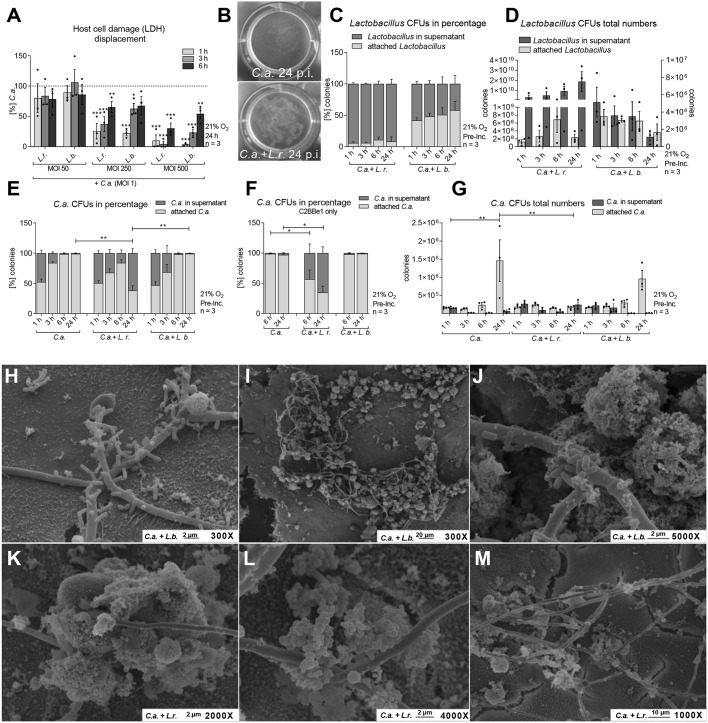Fig. 7.
Lactobacilli induce shedding of C. albicans and host cells. (A) LDH at 24 h post-infection of IECs infected with C. albicans (C.a.) (MOI 1) for 1, 3 or 6 h and subsequently colonized with L. rhamnosus (L.r.) or L. brevis (L.b.) at various MOI (50, 250, 500). The results were normalized to C. albicans single infection. (B) Macroscopic observation of shedding at 24 h post-infection in a model of IECs colonized with L. rhamnosus or not and infected with C. albicans (MOI 1). (C,D) L. rhamnosus or L. brevis supernatant and cell-associated CFUs measured during the course of C. albicans infection at 1, 3, 6 and 24 h; data shown as relative percentages (C) or absolute numbers (D). (E-G) C. albicans supernatant and cell-associated CFUs measured during the course of C. albicans infection in untreated and L. rhamnosus- or L. brevis-colonized (MOI 50) IECs at 1, 3, 6 and 24 h (E,G) or 6 and 24 h post-infection (F); data shown as relative percentages (E,F) or absolute numbers (G). Data are mean±s.e.m. *P<0.05, **P<0.01, ***P<0.005 (A: t-test; D-G: one-way ANOVA). (H-M) Scanning electron micrographs of IECs colonized with L. brevis (H-J) or L. rhamnosus (MOI 50) (K-M) and infected with C. albicans for 6 h.

